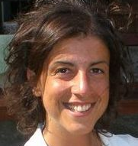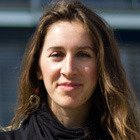Human Pose, Shape and Action
3D Pose from Images
2D Pose from Images
Beyond Motion Capture
Action and Behavior
Body Perception
Body Applications
Pose and Motion Priors
Clothing Models (2011-2015)
Reflectance Filtering
Learning on Manifolds
Markerless Animal Motion Capture
Multi-Camera Capture
2D Pose from Optical Flow
Body Perception
Neural Prosthetics and Decoding
Part-based Body Models
Intrinsic Depth
Lie Bodies
Layers, Time and Segmentation
Understanding Action Recognition (JHMDB)
Intrinsic Video
Intrinsic Images
Action Recognition with Tracking
Neural Control of Grasping
Flowing Puppets
Faces
Deformable Structures
Model-based Anthropometry
Modeling 3D Human Breathing
Optical flow in the LGN
FlowCap
Smooth Loops from Unconstrained Video
PCA Flow
Efficient and Scalable Inference
Motion Blur in Layers
Facade Segmentation
Smooth Metric Learning
Robust PCA
3D Recognition
Object Detection
Body Applications

Accurate models of human body shape and appearance are powerful tools to tackle a variety of problems in medicine, ergonomics, fashion, fitness, etc.
In [], we propose a solution for extracting anthropometric or tailoring measurements from 3D human body scans. This is important in applications such as virtual try-on, custom clothing, online sizing. Existing commercial solutions identify anatomical landmarks on high-resolution 3D scans and then compute distances or circumferences on the scan. This process is sensitive to acquisition noise. In contrast, we propose a novel solution, model-based anthropometry. We fit a non-rigid 3D body model to scan data in multiple poses, thus obtaining a database of registered scans. Then, we extract features from these registrations, and learn a mapping from features to measurements using regularized linear regression.
In [] and [
], we exploit both 3D shape and appearance information (i.e. surface color and texture). In [
] we propose a fully automated pre-screening system for detecting new skin lesions or changes in existing ones over almost the entire body surface. This is crucial for early diagnosis and treatment of melanoma. Our solution is based on a multi-camera 3D stereo system. The system captures 3D textured scans of a subject at different times and then fit a non-rigid 3D body model to each scan. Skin textures are thus in accurate alignment across scans, facilitating the detection of new or changing lesions. On a pilot study, our approach proved able to detect changes as small as 2-3mm.
Members
Publications




